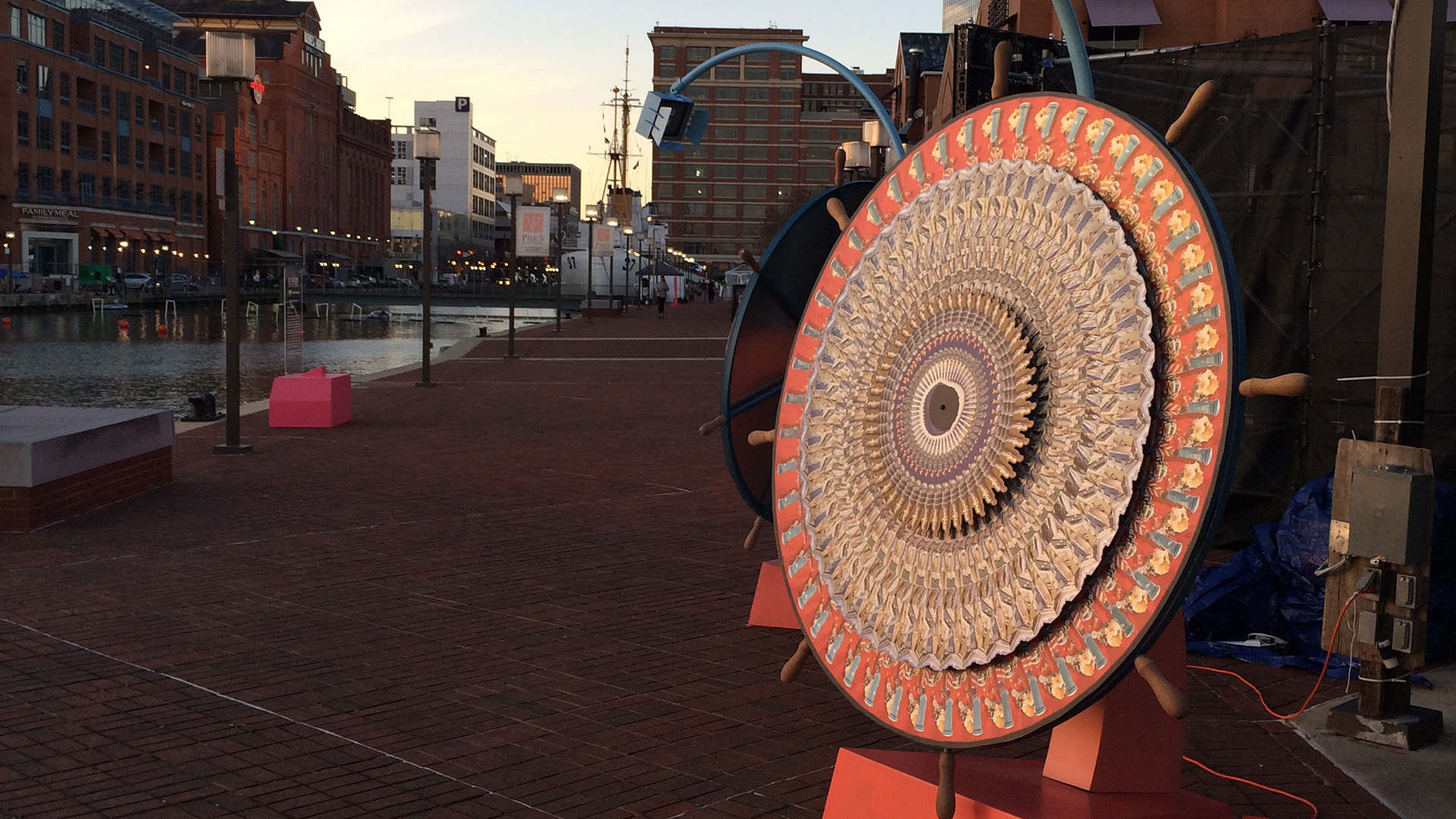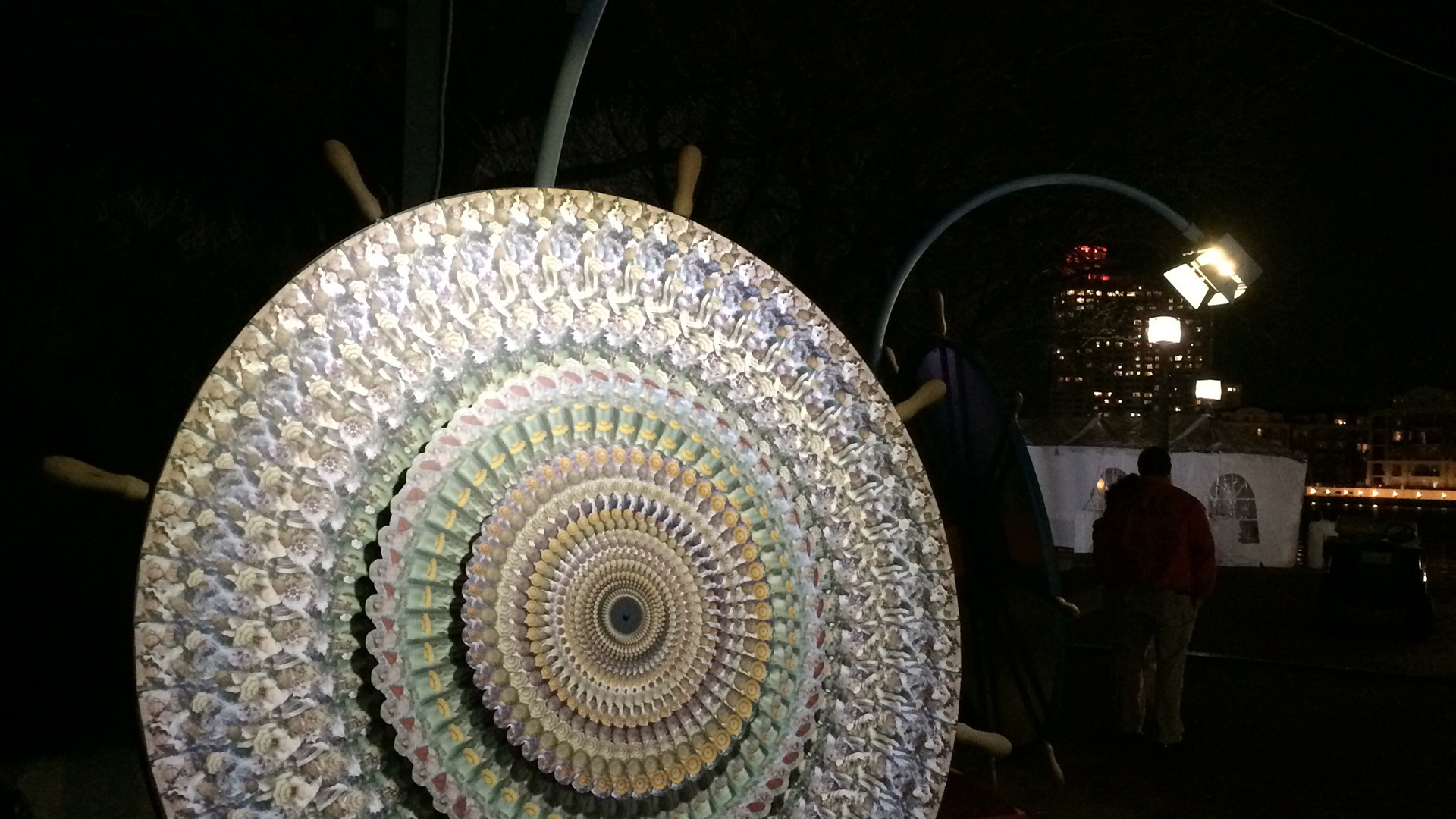Zoetropes for the 21st Century
One of the most popular installations at the 2017 Baltimore Light City Festival was Eric Dyer’s Shabamanetica, two spinning sculptures that resembled massive ship wheels. As the wheels spin, a strobe light flashes, and the static images on the zoetropes come to life. One features spinning parasols and Panamanian waterfalls; the other shows Shanghai cargo cyclists and a machine that spits out poop-emoji pillows. Shabamanetica’s swirl of colors and objects unites three disparate places: Shanghai, Baltimore, and the Panama Canal with Kinetics. As Dyer, a Professor of Visual Arts at UMBC, explains, “The animations combine imagery from Shanghai, Panama, and Baltimore: three places connected anew by the recent expansion of the Panama Canal and dredging of the Port of Baltimore in preparation for the gigantic Neopanamax container ships.” This work was supported by one of the IRC’s Summer Faculty Research Fellowships.
Dyer knew that he wanted the project to explore the connections between Baltimore, the East Coast’s port that is best suited to the enormous Neopanamax ships, and Shanghai, where Dyer had recently taught a zoetrope-making workshop. (Zoetropes are optical devices that give the illusion of motion from a series of static images.) While in Shanghai, he found himself fascinated by the wide variety of umbrellas and parasols that people used. Dyer speculates that he was drawn to them by their zoetrope-like radial shape and ease of spinning, and he shot a video of his students playing with them. While visiting the Baltimore Museum of Industry, Dyer discovered that Baltimore was once the largest manufacturer of umbrellas in the world. But the Panama Canal, which made it possible to ship goods more cheaply from the Pacific Rim to the Atlantic, ended that. Dyer wanted Shabamanetica to create a seamless interactive experience for the public. He achieved it first by having individuals spin the wheels to activate the artwork. He also wanted to hide the technology, by putting the strobe light at the edge of the viewer’s peripheral vision and hiding the electronics in the base and behind the wheel.
IRC faculty research assistant, Mark Murnane, worked with Dyer to build the 400-watt LED strobe light system. The system uses an encoder to measure the speed at which the wheel is spinning and sync the strobe to it. The strobe light must be carefully synchronized with the wheel for the images to appear as a smooth animation. One challenge came in getting powerful enough circuitry to drive 400 watts of LEDs. The other came in getting the strobe light to appear smooth at lower speeds, so as not to trigger seizures in any visitors. Finally, Dyer discovered that because the temporal resolution (frame rate) of the images was sometimes double that of film and video and the printed resolution of the images was about 16x that of HD video, the combination made for imagery that seemed hyper-real and richly dimensional.


Researchers and Creators
Project Director: Eric Dyer
IRC Faculty Research Assistant: Mark Murnane
Imaging Research Center, UMBC © 2024
